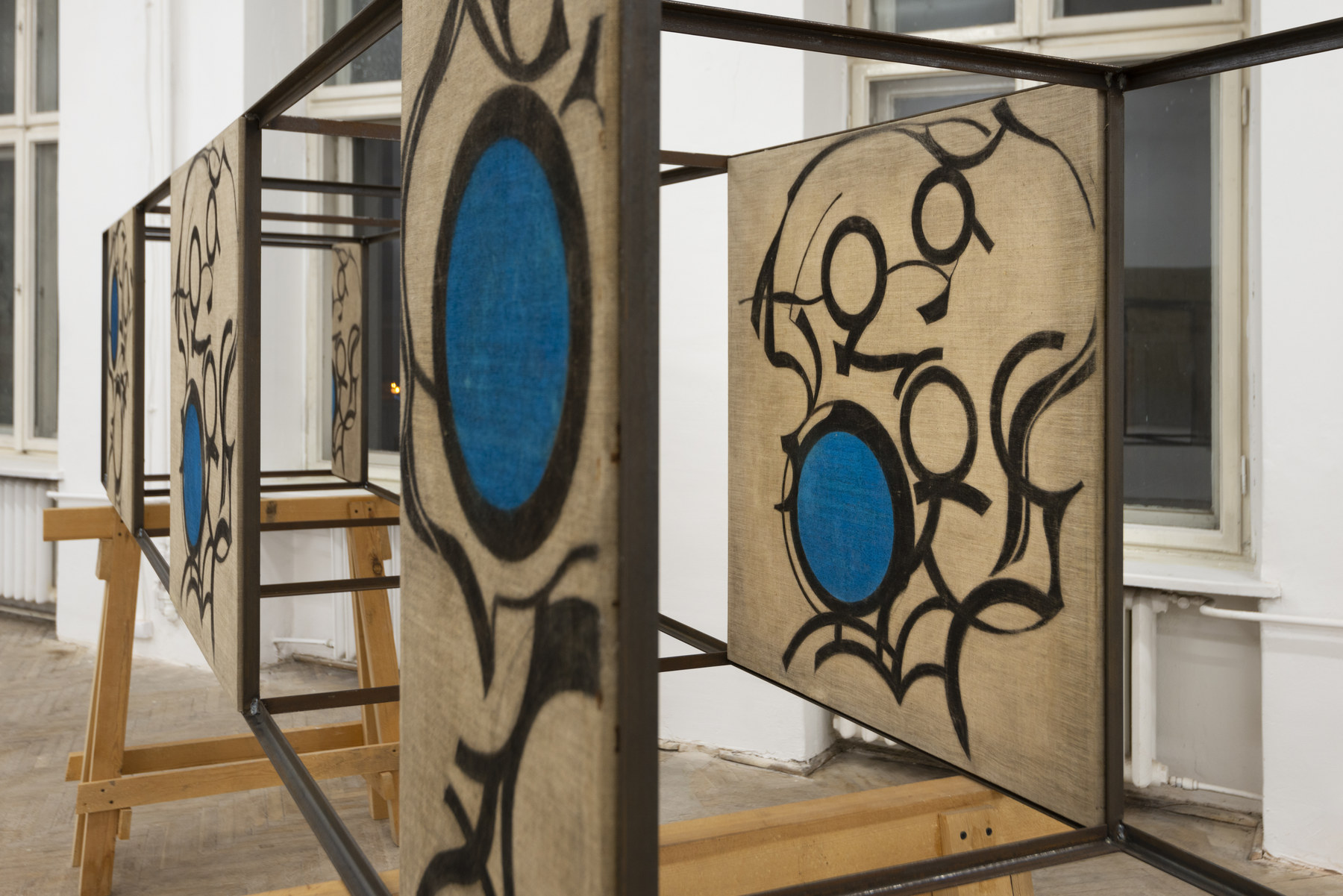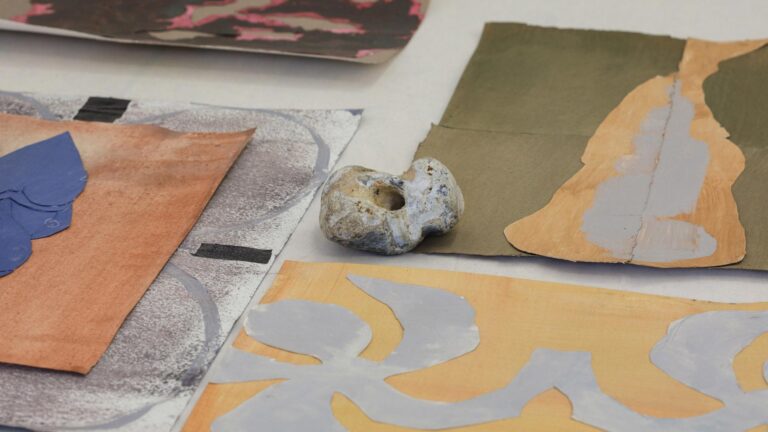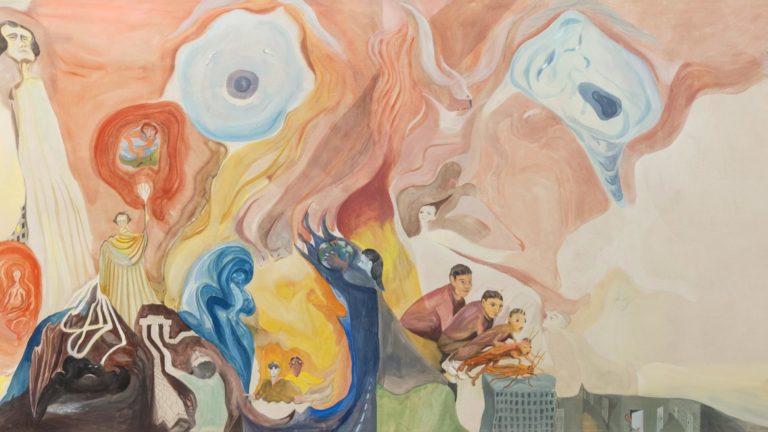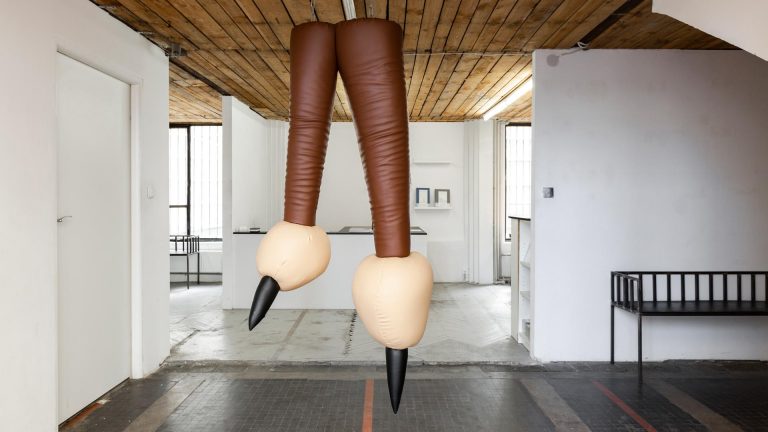Artists: Wanda Czełkowska, Paul Czerlitzki
Exhibition title: Betwixt
Venue: Piktogram, Warsaw, Poland
Date: February 23 – March 30, 2018
Photography: Bartosz Górka / all images copyright and courtesy of the artist and Piktogram, Warsaw
The space in between is the place, that interests Wanda Czełkowska the most. The large scale vertical installations consisting on canvases joint together on the recto by the raw material construction have their beginning in the work Wall (1975). Metal, minimal, yet somehow drastic scaffolding on which the work is leaning, confronts the viewer. It reveals the place occupied by the participant to herself/ himself. This is a place in relation, not allowing indifference, triggering an inter-objective empathy.
If we go even deeper into the past, the very idea of these works that by reduction of the space, liberate it, occurs in a monumental concept of Ruthless elimination of the sculpture as a notion of shape (1975-1995). Between post Minimal and conceptual, it has dematerialized the object, freeing the space to the presence.
In Elegy (1990) that is part of the show, as well as in other works using raw canvases, the problem of space has also one more aspect. It brings Czełkowska’s dialogue or even a dispute with a tradition of painting. As a declared opponent of a mimetism, the artist stresses out the importance of the materials she usually uses, in case of canvases – charcoal and temper that are abraded and scattered on the canvas organically binding with it. And on a formal level, the curve lines and circles are taken from the realm of sculpture. As Czełkowska says herself: “The circles aren’t the goal, they are a result”.
Regardless that Paul Czerlitzki’s works are, strictly speaking, canvases stretched on wooden frames, sometimes covered with pigments, in a given space they behave more like sculptural objects – they engage in a close relation with the space, often playing a nonchalant game. It happens that they go as far as outside of the exhibition room that they wander onto the roofs and facades of buildings (like in the series Anna in Cologne and Zurich). Contrarywise, in Semptember series where large scale canvases are ‘filled’ with huge, almost all-over round holes, the space is ‘dragged into’ the painting, it penetrates it to the extent that it fills it almost completely. Ultimately, in the site-specific works from the Untitled series dematerialized pigment ‘shadows’ of paintings are absorbed by precisely selected parts of walls.
What becomes more important than the space depicted in the painting is the space between the walls, the ceiling, and the floor that ‘picture’ occupies. Also, the space between the language and the ineffable but tangible materiality that Johanna Graefield, addressing the Fleshout series, described as follows: “Processing the canvas extensively with animal glue – a traditional technique that the artist has learned by watching his mother in her studio, leads to structured surfaces that vary between two-and three dimensionality. The usually soft and fragile canvas is turned into solid, robust base with a sculptural appearance, being able to break light and colour in a way that it appears in a different scale from each angle one stands”.
The word ‘picture’ is placed in inverted commas above, because Czerlitzki’s works represent nothing but themselves – what one can see is the material and the technique. In this way they encourage the viewer to realize their ontological status and to consciousnessly experience what is given directly but also, at the same time, to open to sensual impressions, to ‘feel’ the space.
As Laura Preston stated: “In forging out this space between, between language and traced tactility, Paul Czerlitzki is moving around the medium of painting, almost to convince himself that it could get more real.”
Ewa Opałka, Michał Woliński
In cooperation with Introspection Foundation; support by Stefan Gierowski Foundation





















































